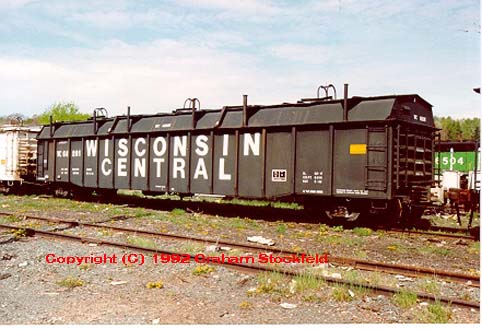I recently acquired a couple of modern drop end gondola cars which lead me to think about covered gondolas and their cargos.
Question is what is carried in a covered gondola? How are they loaded and unloaded?
Inquiring minds want to know.
I carry batteries and ESCs in mine. I usually load them by hand. How do you load yours? 
Scrap metal, dirty dirt, glass, steel, steel coils, random stuff under traps, machinery under traps, garbage, rolled steel, aluminum ingots, old ballast from MOW crews.
Some of these are covered, others are not. If you can fit it in a gon, you can make it work!
Yes, all that stuff, but don’t the covers on covered gondolas usually have lift loops or rings to lift the cover off for loading and unloading. The Aristo car doesn’t have these apparatuses, but they have roof walks.

Ah Steve ever the Wise Guy. 
I was thinking the hard tops not tarps.
That is interesting David. I can see a roof on a covered gondola being lifted off. We have trash trains that are hauled off Cape to the incinerator and if I remember right the roofs come off and the cars are rolled to dump but those are hoppers not gondolas. Maybe covered gondolas are treated the same?
I was thinking about the covered gondola that Aristo made and they look to have the standard boxcar roofs on them.
So if a load like contaminated dirt needs to go into a covered gondola wouldn’t it be more practical to put it into a covered hopper for easier unloading?
I guess what I’m trying to figure out is what goes into a covered gondola and why but more importantly does my RR need one?
The things that would be loaded into a covered gondola would be odd sized loads that would be difficult to load into a boxcar, and that need to be protected from the weather. Stuff like steel (coils, plate) and possibly lumber elements like roof trusses. Stuff that can flow, like sand, gravel and dirt, would be best transported in a covered hopper.
Aristo did use a boxcar roof for their car, and that appears to be incorrect for a covered gondola. I was trying to allude to that in my previous post. That’s why my lone Aristo covered gondola travels my railroad topless.
It’s my understanding that the covered gondola pictured above was developed for the coil steel trade. From Steel mill to Stamp foundry. The odd fixtures on top of the cover allow for stacking the covers. They were added later as needed.
I imagine the cars were uncovered entering the plant and spotted at different shops where needed. When empty, they picked up a cover upon leaving the plant.
I doubt if these cars saw other lading while employed by the steel companies.
John
An enterprising UK modeller has made a couple of these covers for his gonds. They look great in his pics. I have five Aristo gonds, only one - used as a battery trailing car - has a cover. The rest have loads, I now have two spare covers but have not found a use for them so far - but one day I might get a flash of inspiration. (http://www.cosgan.de/images/smilie/froehlich/k030.gif)
Any loose solid that might absorb water gets covered, for obvious reasons. Well, maybe NOT so obvious to one driver here in UK with a truck-load of forty tons of sand - without a cover.
After the downpour, his load had gained another twlve - fourteen tons of extra ballst.
tac
Ottawa Valley GRS
David Maynard said:
Stuff like steel (coils, plate) and possibly lumber elements like roof trusses. Stuff that can flow, like sand, gravel and dirt, would be best transported in a covered hopper.
Except that sand, dirt, gravel would contaminate the covered hopper and it would be useless for any type of food grade service. The dirt,gravel etc stuff you see in gons generally is pretty dense, and at lot of it is contaminated soil going to the landfill.
Another seldom modeled gon load is track panels, or turnouts.

Craig, but Todd was asking about covered gondolas.
Here in PA there are a lot of covered hoppers coming in with sand in them, for the fracking industry. Yes, the cars are now no longer “food grade”, but since so much of that sand is needed, I don’t think they car owners are concerned.